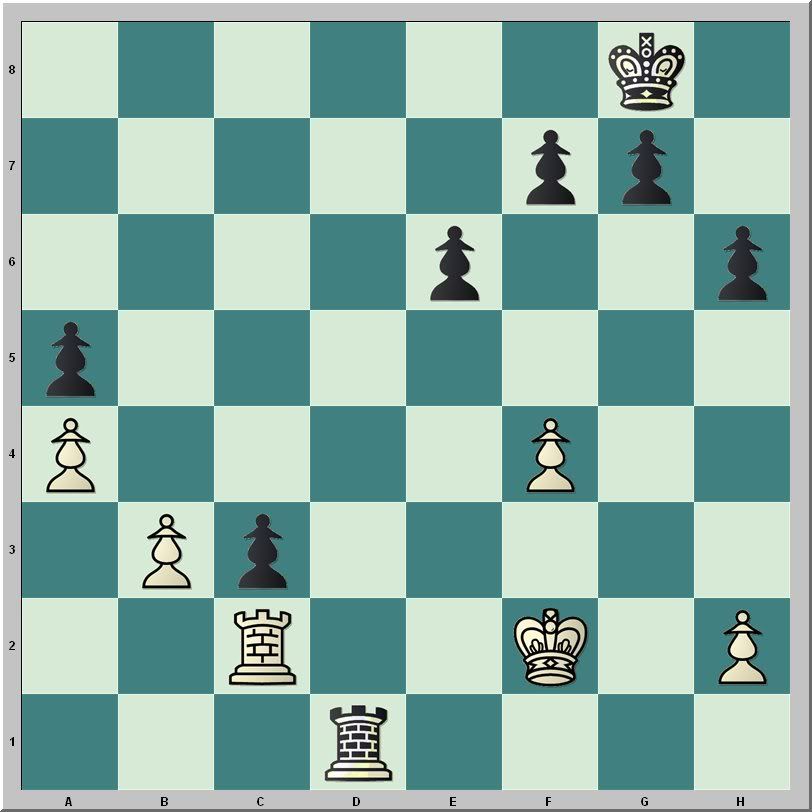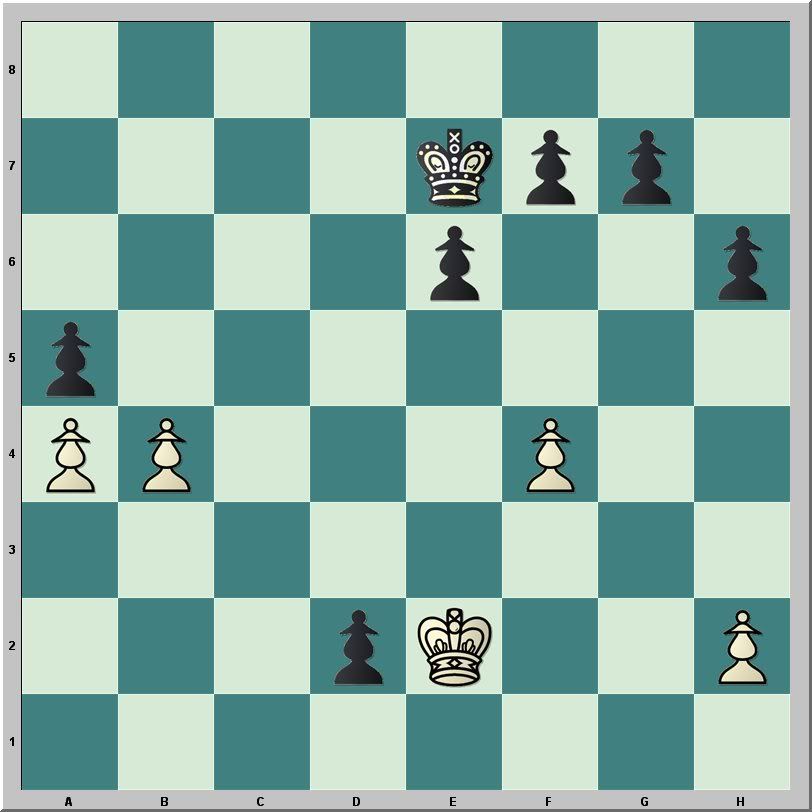The content of a game should be a search for truth, and victory a demonstration of its rightness.Back in 1997 in a simul put on by the then strongest local player, a high school student named Nate Fewel, I forced the exchange of rooks to go into a king and pawn endgame. I won this ending against Nate that day, and against Fritz 9 this morning.
Vasily Smyslov
Black to move

Against Nate, the game continued 34...Rd2+ 35.Rxd2 cxd2 36.Ke2 Kf8 37.Kxd2 Ke7 38.Kc3 Kd6 39.b4 g5 40.fxg5 hxg5
White to move

Here, Nate played 41.bxa5, and his king became immobile defending against the onslaught of my pawns rolling down the center; my king was free to mop up the queenside.
Fritz 9 played differently: After 34...Rd2+ 35.Rxd2 cxd2 36.Ke2 Kf8, Fritz played 37.b4. After 37...Ke7, we reached this position.
White to move

Fritz played 38.bxa5 and had the same problems as Nate.
After beating Fritz, I tried the position anew, this time against Hiarcs 12, which played 38.b5!.
The engine continued to evaluate the position as winning for Black, but I could not find the way to promote a pawn soon enough to prevent White's equalizing promotion of the b-pawn. I tried using the suggest a move feature with the same results. Black seems to have a clear advantage, but good moves by both sides appear to lead to a drawn queen and pawns versus queen and pawns endgame.
In 1997, postgame analysis with Chessmaster 3000 confirmed that 34...Rd2+ is a winning move. Play against Fritz 9 seems to confirm this judgement; but, a stronger engine introduced doubts. What is the truth?














No comments:
Post a Comment